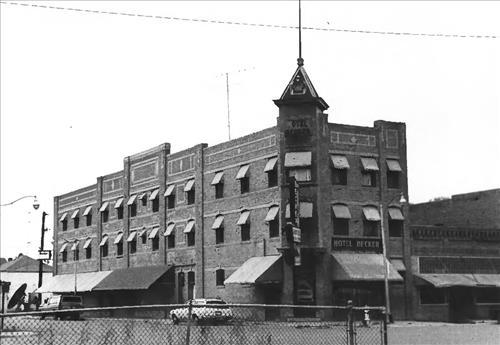Long before fur trappers entered the Bighorn Valley, Crows, Sioux, and Cheyennes vied for the area’s abundant game. In 1876, Sioux and Cheyenne warriors defeated the U.S. Army at the Battle of the Little Bighorn; the following year, the Army established Fort Custer just across the river. After the Chicago, Burlington, and Quincy Railroad laid its tracks into the Crow Indian Reservation in 1894, the tribe faced enormous pressure to open the reservation to homesteaders. In its last and smallest land cession, the Crows relinquished territory south of the Yellowstone River in 1904. To serve the anticipated flood of settlers, the Lincoln Land Company platted Hardin in 1907. Owned by the same men who owned the railroad, the land company founded some three hundred towns across the West. It gave Hardin a variation of its T-town plat, with Center Street forming a T with the tracks. Forty men arrived from Billings to place bids the morning town lots were sold. Edwin Spencer bought the first lot for $900, where he built a general store and post office. In the 1910s architectural fashion dictated restrained, symmetrical buildings, and solid brick business blocks, some designed by Billings architects, came to dominate Hardin’s commercial district. After World War I, low commodity prices slowed the growth of this agricultural shipping point. However, Hardin continued to serve as Big Horn county seat, a role represented by its 1937 Moderne style courthouse.
Images
